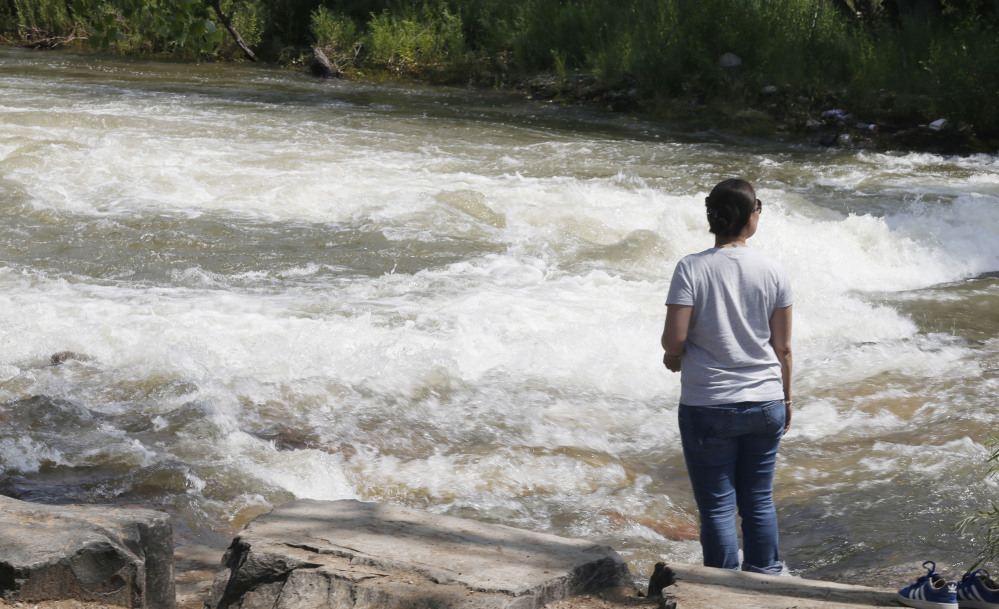DENVER — Rapidly melting snow and heavy spring rains are sending Colorado’s rivers tumbling out of the mountains, so far claiming the lives of at least 11 people and forcing some whitewater rafting companies to seek out calmer rapids and stock extra safety gear.
Last year, 17 people died in boating accidents, including 14 on Colorado’s rivers, after heavy late-season snow raised water levels, said Kris Wahlers, boating safety manager for Colorado Parks and Wildlife. Colorado averages 10 boating deaths a year.
But the deaths haven’t dampened the attraction of the state’s whitewater rafting industry, which drew about half a million people last year and had an economic impact of $160.1 million.
“If it was entirely predictable, we probably wouldn’t have that much business. Part of the thrill of it is it’s unpredictable,” said David Costlow, director of the Colorado River Outfitters Association, which represents the industry. Costlow added that having so few deaths with so many people running the rapids amounts to “a hell of a record.”
Those who have died this year include nine kayakers and rafters – both on guided commercial trips and navigating rivers on their own – as well as a man tubing near Pueblo and a fisherman swept away in Boulder Creek. The victims range from a 56-year-old man to an 11-year-old boy and include both out-of-state tourists and adventure-seeking locals.
Two other tubers are missing and likely dead, including a 20-year-old man who fell off his inner tube and slipped out of sight Saturday on the South Platte River near Denver. The U.S. Army Corps of Engineers took the rare step of temporarily slowing releases from Chatfield Dam, which helps supply water to the metropolitan area, on Tuesday to lower the river’s level and help searchers.
Wahlers and industry representatives say it’s hard to explain why there have been more deaths in whitewater rafting, a sport that poses a variety of risks and where flirting with danger is part of the attraction. They say it’s possible more unprepared people have been attracted to the dramatic rapids.
Historically, Costlow said, some people die of medical problems while rafting; some are killed in high water, while others die in shallow currents. He said it’s more important to understand the inherent risks of the unpredictable and increasingly popular sport. Rocks and debris in the river also pose a threat, and rafters routinely must sign waivers saying they understand the risks.
Wiley Ledwith, part owner of Independent Whitewater in Salida, said, “Whitewater rafting is not a definite thing. It’s not an amusement park. … You got to know what you’re getting into, and if you don’t, that’s when you go to a professional.” he said.
Denver resident Nancy Shah, who rafted the Arkansas River on Sunday, said she has been on such trips about 10 times, but she wouldn’t think of doing it on her own.
“You could clearly tell they had been out there,” she said of her guides. “They were very familiar with every spot on the river. They knew what they were doing.”
Shah said she knew about the river deaths before she went rafting but was undeterred because she felt comfortable going with professionals.
“We had good raft guides,” she said. “It didn’t feel extremely dangerous. I think that’s probably a factor of them being very cautious.”
Send questions/comments to the editors.



Success. Please wait for the page to reload. If the page does not reload within 5 seconds, please refresh the page.
Enter your email and password to access comments.
Hi, to comment on stories you must . This profile is in addition to your subscription and website login.
Already have a commenting profile? .
Invalid username/password.
Please check your email to confirm and complete your registration.
Only subscribers are eligible to post comments. Please subscribe or login first for digital access. Here’s why.
Use the form below to reset your password. When you've submitted your account email, we will send an email with a reset code.